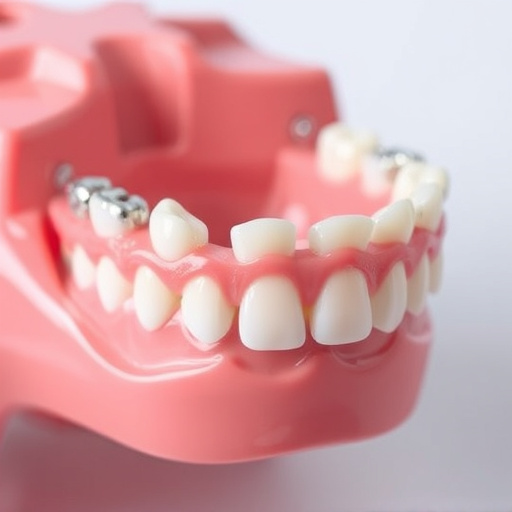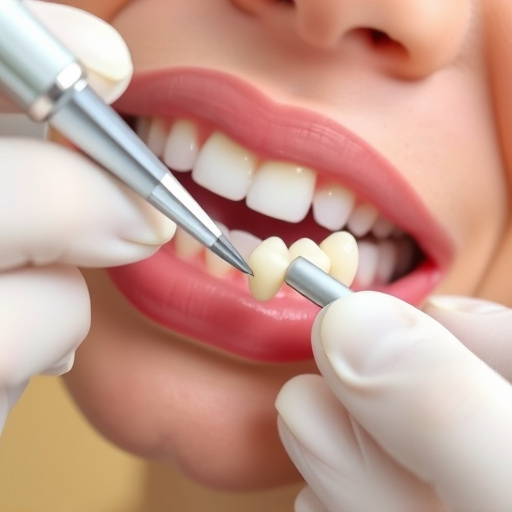Crown lengthening procedures are often needed due to insufficient tooth structure or tight gum tissues caused by genetic factors, poor hygiene, or trauma. This pre-restorative step is crucial in children's dentistry and after extractions/cleanings for long-term stability and aesthetic appeal. The process involves a thorough exam, re-sectioning or filing to create space, a healing period, final impressions for custom crowns, and post-operative care. It enhances appearance, supports better oral health, enables larger restorations, addresses gum recession, and ensures long-term success with regular check-ups.
“Proper dental alignment relies on a crucial yet often overlooked aspect: crown lengthening. This procedure is essential for creating sufficient space within the jaw to place crowns seamlessly, ensuring both functionality and aesthetics. Understanding when and why crown lengthening is necessary is key. This article delves into the details of this process, from the initial assessment to post-operative care, guiding you through every step. By exploring the ‘crown lengthening procedure,’ readers will gain insights into achieving optimal dental outcomes.”
- Understanding Crown Lengthening Necessity
- The Procedure: Steps and Techniques
- Post-Op Care and Expected Results
Understanding Crown Lengthening Necessity

In many cases, proper dental alignment and functionality require crown lengthening procedures. This is often necessary when there isn’t enough tooth structure present to support a crown, or when nearby bone and gum tissues are too tight for a successful placement. Factors like genetics, poor oral hygiene, and traumatic injuries can contribute to insufficient tooth length, making crown lengthening a crucial step before proceeding with restorative treatments like crowns or bridges.
Understanding the need for crown lengthening is essential in children’s dentistry, as it ensures that growing teeth have adequate space and health. Similarly, after certain dental procedures like extractions or cleanings, where significant tooth structure may be lost, this technique becomes vital to prepare the tooth for long-term stability and aesthetic appeal.
The Procedure: Steps and Techniques

The crown lengthening procedure involves a meticulous process to ensure proper tooth positioning and aesthetic results. It begins with a comprehensive examination to determine the extent of lengthening required. Dentists use specialized tools to carefully create space between the gum line and existing tooth structure, often employing techniques like re-sectioning or using special files to reshape the tooth. This step is crucial for preparing the tooth to accommodate a crown, ensuring it has sufficient support and structure.
Once the desired length is achieved, a healing period follows to allow the gums to recover. Post-healing, a final impression is taken to create a custom crown that fits seamlessly with the lengthened tooth. This procedure, often considered a key aspect of preventive dentistry, not only enhances the appearance of teeth but also facilitates better oral health by ensuring proper tooth repair and supporting the placement of long-lasting cosmetic fillings.
Post-Op Care and Expected Results

After a successful crown lengthening procedure, proper post-operative care is essential to ensure optimal healing and desired results. Patients are typically advised to take it easy for the first 24 hours, avoiding strenuous activities or exercises that may dislodge the gums or cause discomfort. A gentle oral care routine is crucial; patients should brush their teeth gently using a soft-bristled toothbrush and floss as directed by their dentist. Applying ice packs for 15-minute intervals several times a day can help reduce swelling and pain, especially in the first few days following the procedure.
The expected results of crown lengthening are twofold. Firstly, it allows for the placement of larger, more aesthetically pleasing dental restorations, such as crowns or bridges. This is particularly beneficial for teeth that have been reduced due to decay, trauma, or previous restorative work, needing additional length for proper support and stability. Secondly, adequate space is created to address any underlying issues like gum recession or misaligned teeth, leading to improved oral health. While some minor bleeding or swelling is normal, patients should monitor their gums for any signs of infection, such as prolonged redness, warmth, or pus, and contact their dentist if they experience severe pain or have concerns about healing. Regular dental check-ups are essential to maintain the long-term success of this procedure, including any necessary follow-up treatments, such as dental fillings or tooth extractions, to ensure a healthy smile.
Crown lengthening, or gingival or soft tissue augmentation, is a crucial dental procedure that ensures proper crown placement. By enhancing the gum line, this technique allows for optimal fit of dental crowns, improving both aesthetics and functionality. Understanding the necessity and following post-op care instructions lead to satisfying results, ensuring your smile remains healthy and beautiful. The crown lengthening procedure truly revolutionizes oral health and appearance when executed by professionals.














